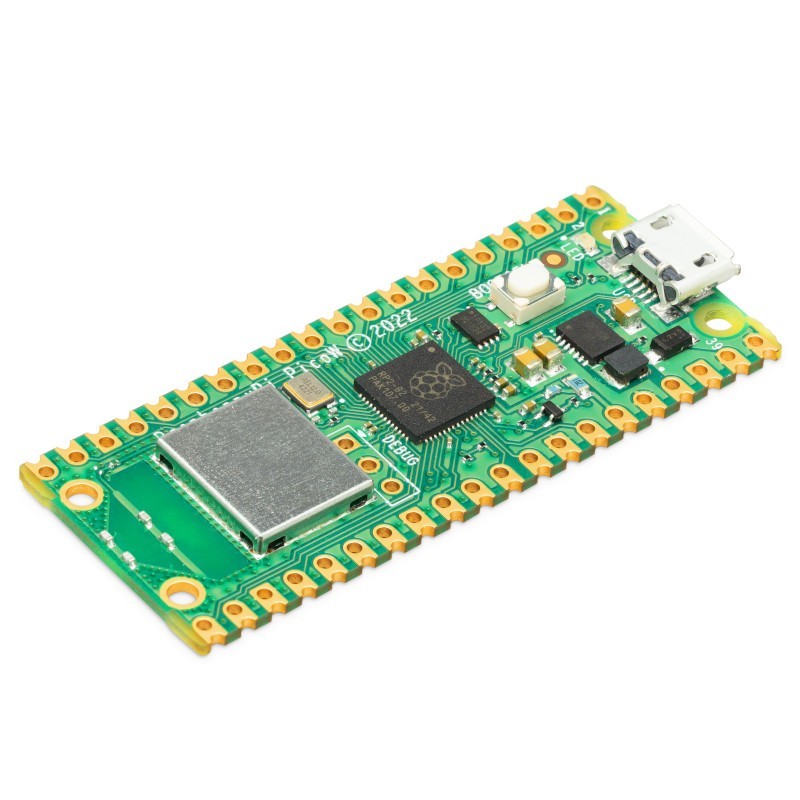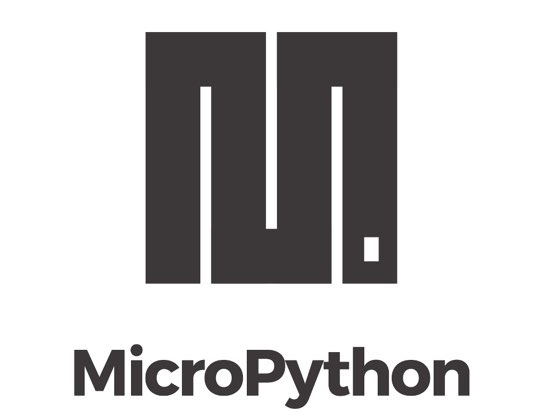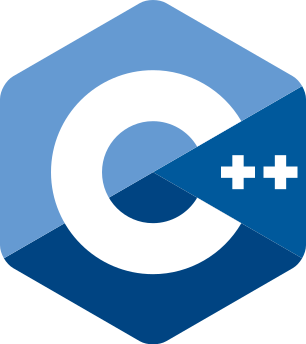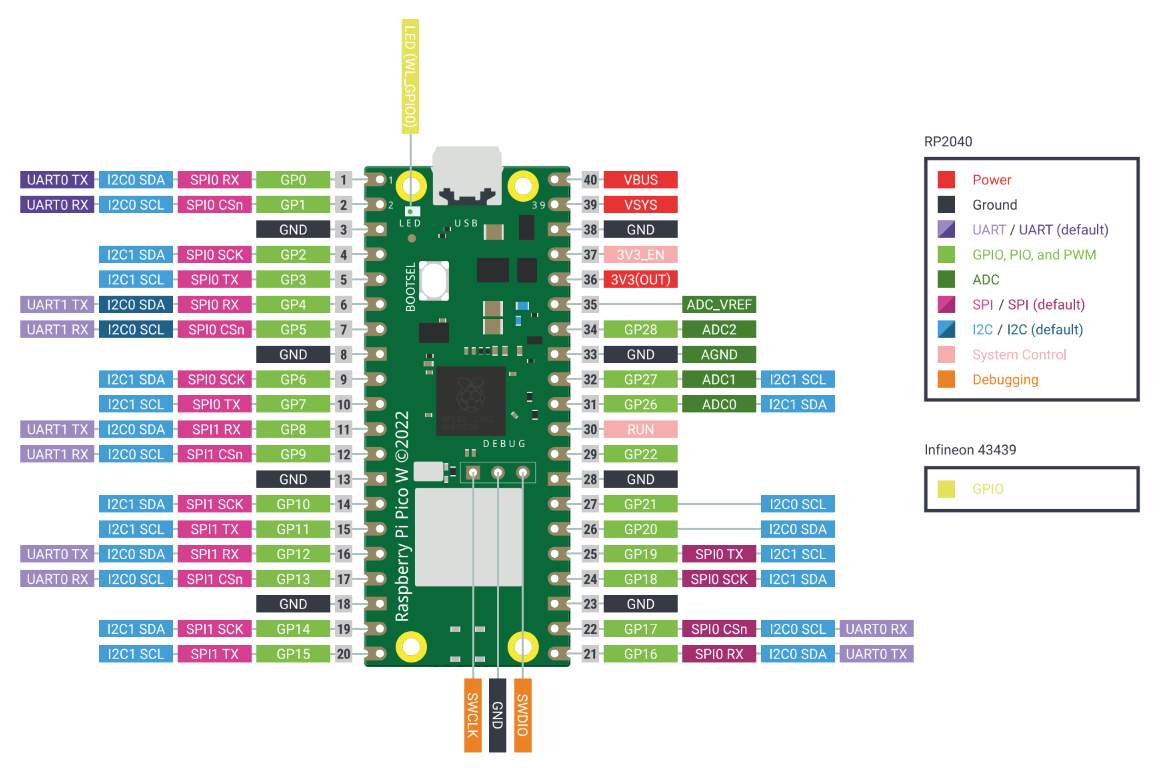




zł23.50 tax excl.
The board with the RP2040 microcontroller equipped with two ARM Cortex-M0 + cores operating at a frequency of 133 MHz, 264 kB RAM. The board also has 2 MB of QSPI flash memory. In addition, the board is equipped with the Infineon CYW43439 system, extending the board with wireless connectivity. Raspberry Pi SC0918
The Raspberry Pi Pico is the first board to feature a microcontroller designed by the Raspberry Pi foundation. The chip that is the heart of this board has been equipped with two ARM Cortex M0+ cores operating at a frequency of 133 MHz, 256 KB of RAM and 30 GPIO ports. The microcontroller itself is not equipped with flash memory, but on the board there is an external memory with a capacity of 2 MB connected via the QSPI interface. In addition, the board is equipped with the Infineon CYW43439 system, extending the board with wireless connectivity. The module provides WiFi connectivity in the IEEE 802.11 b / g / n standard. The platform supports the popular MicroPython and C/C++ programming languages. Programs can be uploaded to memory via the USB interface in mass storage mode or by using an external programmer that supports the SWD interface.

Kamami is the official distributor of Raspberry Pi minicomputers and dedicated accessories.

MicroPython is a special version of the Python 3 programming language, prepared to run directly on embedded systems such as the Raspberry Pi Pico. The version prepared especially for the RP2040 microcontroller, supports REPL, an interactive shell that allows you to execute scripts, typing into the console and viewing the results of the program in it. Thanks to this technology, it is also possible to save the program in flash memory.
To facilitate the programming of the RP2040 microcontroller in C / C ++, the Raspberry Pi Foundation has prepared an official SDK toolkit that can be integrated with popular IDEs such as Visual Studio Code or Eclipse. The entire environment configuration process is described in the Getting started with Raspberry Pi Pico document.


The Raspberry Pi Pico can be programmed via the USB interface, it can be done in two ways.
The first is the USB mass storage mode, to program the board in this way, press and hold the BOOTSEL button, and then connect the board to the computer with a USB cable. The device will be recognized as mass memory to which you can upload the program in the same way as copying files to a pendrive. After uploading the program, the microcontroller will automatically reset and start the uploaded program. This method is suitable for uploading programs written in C / C ++ or for uploading the MicroPython interpreter.
The second way works only with programs written in MicroPython and requires prior loading of the interpreter using the first method. This method consists in saving the program layout transferred with REPL in the memory.
When programming in C/C++, there is often a need to repeatedly test the program. Loading a program via USB requires repeating the procedure every time, disconnecting the board from the computer, pressing the button and connecting the board, and then finding the compiled program and copying it to memory. The whole thing takes quite a long time, but fortunately it can be simplified using an external programmer with SWD interface. Programming via SWD is much faster, you only need to connect the programmer once with a 3-pin connector and power supply e.g. via USB and you can upload programs directly from the IDE. In addition, you can debug the program in this way and efficiently find any errors in the code by running it line by line.
The Raspberry Pi Pico is designed to be programmed directly with the Raspberry Pi 4B or 400. The manufacturer has prepared detailed instructions for setting up programming environments and ready-made configuration scripts. Pico can be programmed from the Raspberry minicomputer both via USB and via SWD. The big advantage of this solution is no need to use an external SWD programmer. Pico ports can be connected to RPI ports. To ensure a stable connection, you should connect Pico directly to the minicomputer, the use of the contact plate may introduce interference.
To use the full potential of programming environments, it is recommended to use minicomputers with min. 4 GB of RAM.
The Raspberry Pi Foundation has prepared the Picoprobe application that allows you to change RPI Pico into an SWD programmer and a USB - UART converter. Thanks to this, you can program the RP2040 without the need for an SWD programmer, using only the second board with the RP2040 microcontroller.
Warning!
The Raspberry Pi Pico board does not include goldpin connectors and a microUSB cable. Our offer includes connectors for GPIO 1x40 (they can be easily divided into two 1x20 connectors) and a connector 1x3 for a programmer. There are also ready-made kits containing connectors and microUSB cable.

Data sheet
Manufacturer BTC Korporacja sp. z o. o. Lwowska 5 05-120 Legionowo Poland sprzedaz@kamami.pl 22 767 36 20
Responsible person BTC Korporacja sp. z o. o. Lwowska 5 05-120 Legionowo Poland sprzedaz@kamami.pl 22 767 36 20
A set of goldpin male connectors intended for Raspberry Pi Pico boards. The set includes two 20-pin strips and one 3-pin strip with a pitch of 2.54 mm. Soldered connectors enable easy connection of expansion modules and other accessories
This Raspberry Pi RP2350B microcontroller development board features a dual-core ARM Cortex-M33 or Hazard3 RISC-V processor. It features a 2.8-inch 480x480 circular IPS display with a capacitive touchscreen and LVGL support. It includes 16MB of flash memory, a real-time clock, a 6-axis motion sensor, a microSD slot, and a lithium battery connector. It\'s ideal for HMI, IoT, and smart wearable device projects. Waveshare RP2350-Touch-LCD-2.8C
No product available!
A board with an RP2040 microcontroller equipped with two ARM Cortex-M0+ cores that operate at a frequency of 133 MHz and 264 kB RAM. There is also 16 MB of QSPI Flash memory on the board. The system can be programmed in C/C++ or MicroPython. It offers a DVI connector, a micorSD card slot and a 40-pin GPIO connector. The module has a shape and connector arrangement similar to the popular Raspberry Pi Zero minicomputers. Waveshare RP2040-PiZero
The board with the RP2040 microcontroller equipped with two ARM Cortex-M0+ cores, which work at a frequency of 133 MHz, 256 kB RAM. The board also has 4 MB of QSPI flash memory. The system can be programmed in C/C++ or MicroPython. Adafruit 4888
Compact development board based on the Raspberry Pi RP2350 microcontroller, equipped with two cores (ARM Cortex-M33 and Hazard3 RISC-V), 520KB RAM and 2MB Flash, ideal for IoT, smart home and wearable projects. With 11 IO pins, battery charging support, C/C++/MicroPython/Arduino programming and SMT support, it is perfect for rapid prototyping and mass production. DFRobot DFR1188
The board with the RP2040 microcontroller equipped with two ARM Cortex-M0+ cores, which work at a frequency of 133 MHz, 264 kB RAM. The board also has 2 MB of QSPI flash memory. The system can be programmed in C/C++ or MicroPython. Waveshare RP2040-LCD-0.96
The board with the RP2040 microcontroller equipped with two ARM Cortex-M0+ cores, which work at a frequency of 133 MHz, 264 kB RAM. The board also has 4 MB of QSPI flash memory. The system can be programmed in C/C++ or MicroPython. Waveshare RP2040-Plus-M
NeoPixel 8-channel RGB LED driver. It features an RP2040 microcontroller with two ARM Cortex-M0+ cores, 264 kB of RAM and 8 MB of external Flash memory. Adafruit 5650
RP2350-Touch-AMOLED-1.8 with battery is an advanced development board with an AMOLED display, touch support, motion sensors, audio, and a wide range of interfaces. Designed for mobile and embedded applications, it enables the creation of compact interactive devices with full open-source support.
RP2350-Touch-LCD-1.28 is a modern development board with a color touch screen, dedicated to embedded project creators who require high performance and compact dimensions. Thanks to support for two architectures and open-source software, the module is perfectly suited for creating intelligent HMI devices, portable applications, and systems requiring versatile communication and user interaction.
The RP2350-Plus-M offers the flexibility and performance required in modern embedded projects while maintaining full compatibility with Raspberry Pi Pico and its extensions. Factory-soldered headers and built-in Flash memory make the module suitable for rapid prototyping as well as educational and commercial applications.
Module with a round 1.28" IPS LCD display with a resolution of 240x240 px and an RP2040 microcontroller. Equipped with an accelerometer and gyroscope. Enclosed in a nice metal housing. Waveshare RP2040-LCD-1.28-B
Module with a round 1.28" IPS LCD display with a resolution of 240x240 px and RP2040 microcontroller. Equipped with an accelerometer and a gyroscope. Waveshare RP2040-LCD-1.28
The board with the RP2040 microcontroller equipped with two ARM Cortex-M0+ cores. The board also has 4 MB of QSPI flash memory. 1.14" LCD module. TTGO T-Display RP2040
Servo driver based on the Raspberry Pi RP2040 microcontroller. It allows you to control up to 18 servos, has 6 analog inputs and a QW/ST connector for connecting additional sensors. Pimoroni PIM613
Module with ePaper 2.9" display and RP2040 microcontroller. Equipped with QW/ST connector. Pimoroni PIM607
Starter kit containing Raspberry Pi Pico, necessary connectors and a microUSB cable. The kit is recommended for people programming in MicroPython
No product available!

The board with the RP2040 microcontroller equipped with two ARM Cortex-M0 + cores operating at a frequency of 133 MHz, 264 kB RAM. The board also has 2 MB of QSPI flash memory. In addition, the board is equipped with the Infineon CYW43439 system, extending the board with wireless connectivity. Raspberry Pi SC0918
